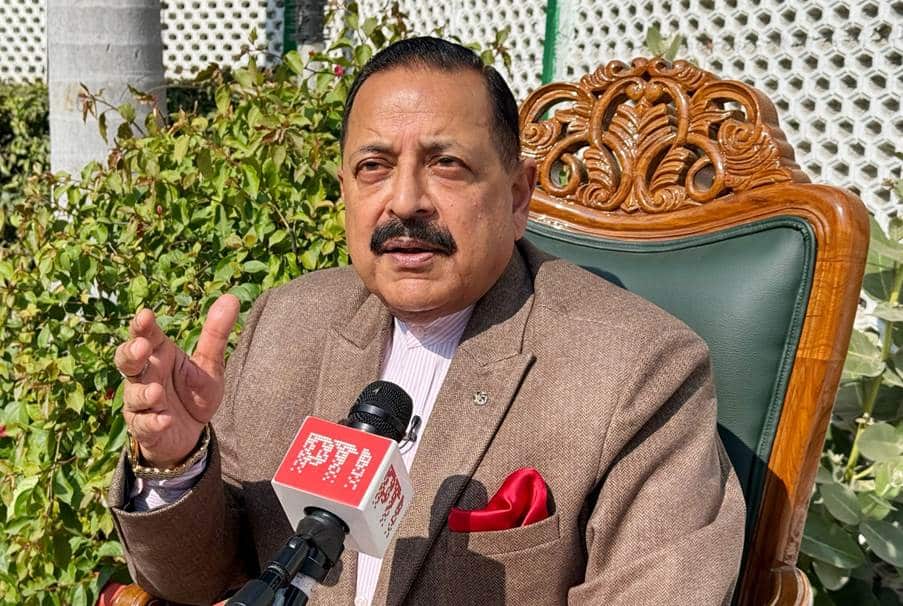Nuclear Mission announced in the Union Budget 2025-26

In a significant announcement, Union Minister Dr. Jitendra Singh revealed the government’s ambitious “Nuclear Mission” during an exclusive media interview. This initiative, part of the Union Budget for 2025-26, aims to revolutionize India’s energy sector by positioning nuclear power as a primary energy source. Dr. Singh, who holds multiple ministerial portfolios, emphasized the critical role of nuclear energy in enhancing India’s energy security and achieving self-sufficiency in energy production. This article explores the key aspects of the Nuclear Mission and its implications for India’s energy future.
The Vision for Nuclear Energy in India
Dr. Jitendra Singh articulated a clear vision for the future of nuclear energy in India. He highlighted the government’s commitment to making nuclear power a cornerstone of the country’s energy strategy. With a focus on clean and sustainable energy solutions, the government aims to reduce reliance on petroleum imports. Dr. Singh noted that the Nuclear Energy Mission for Viksit Bharat will enhance domestic nuclear capabilities and promote private sector participation. This initiative is expected to lead to the deployment of advanced nuclear technologies, aligning with the broader goal of achieving energy independence.
The Union Budget has allocated ₹20,000 crore for research and development in Small Modular Reactors (SMRs). The target is to have at least five indigenously designed operational SMRs by 2033. This investment is a crucial step toward India’s goal of achieving 100 GW of nuclear power capacity by 2047. Such advancements will not only contribute to energy sustainability but also play a vital role in reducing carbon emissions. Dr. Singh’s emphasis on nuclear energy reflects a strategic shift towards a cleaner energy future, positioning India as a leader in the global nuclear landscape.
Private Sector Participation: A Revolutionary Step
One of the most groundbreaking aspects of the Nuclear Mission is the opening of the nuclear energy sector to private players. Dr. Jitendra Singh described this move as “revolutionary,” marking a departure from the decades of secrecy that characterized the sector. For 60 to 70 years, nuclear energy in India operated under strict government control. Now, with increased openness and collaboration, the government aims to foster innovation and growth in the nuclear sector.
Drawing parallels with the transformation of the space sector, Dr. Singh expressed confidence that private sector involvement would lead to significant advancements in nuclear technology. He recalled how Prime Minister Narendra Modi‘s decision to open the space industry to private players resulted in remarkable growth and innovation. The government believes that a similar approach in the nuclear sector will enhance energy security and drive economic growth.
By encouraging private investment and participation, the government aims to create a more dynamic and competitive nuclear energy landscape. This shift not only aligns with the vision of Aatmanirbhar Bharat but also positions India to leverage its nuclear capabilities for sustainable development.
Expanding Nuclear Capacity: A Commitment to Growth
India’s current nuclear power capacity stands at 8,180 MW, but the government has ambitious plans to expand this to 22,480 MW by 2031-32. Dr. Jitendra Singh outlined the ongoing construction of ten reactors across various states, including Gujarat, Rajasthan, Tamil Nadu, Haryana, Karnataka, and Madhya Pradesh. Additionally, plans for ten more reactors are in progress, including a significant collaboration with the USA for a 6 x 1208 MW nuclear power plant in Kovvada, Andhra Pradesh.
A notable achievement was reached on September 19, 2024, when the Rajasthan Atomic Power Project’s Unit-7 (RAPP-7) achieved criticality. This milestone signifies the beginning of a controlled fission chain reaction, showcasing India’s growing nuclear capabilities. Dr. Singh reiterated the government’s commitment to achieving 500 GW of non-fossil fuel-based energy generation by 2030, in line with international climate commitments.
The expansion of nuclear capacity is not just about meeting energy demands; it is also about ensuring energy security and sustainability. By investing in nuclear power, India aims to reduce its carbon footprint and contribute to global efforts against climate change.
Innovative Policies for Sustainable Development
In addition to the Nuclear Mission, Dr. Jitendra Singh introduced the BIOe3 Policy, aimed at fostering a biotechnology-driven industrial revolution in India. This initiative seeks to support biotech startups and facilitate collaborations with the Department of Biotechnology. The government has already achieved significant milestones in biotechnology, including the development of its first antibiotic, Nafithromycin, and the Human Papilloma Virus (HPV) vaccine.
The BIOe3 Policy focuses on advancements in bio-manufacturing, bio-foundries, and circular economy models. It promotes recyclable and reusable products under the “Wealth from Waste” concept. This initiative is expected to spur economic growth, generate employment, and foster environmental sustainability.
Dr. Singh emphasized that the government’s approach to nuclear and biotech advancements follows a whole-of-government and whole-of-science model. This integrated strategy ensures that various sectors work together towards common goals, enhancing India’s position as a global leader in advanced technologies.
Source link
Observer Voice is the one stop site for National, International news, Sports, Editor’s Choice, Art/culture contents, Quotes and much more. We also cover historical contents. Historical contents includes World History, Indian History, and what happened today. The website also covers Entertainment across the India and World.
Follow Us on Twitter, Instagram, Facebook, & LinkedIn

